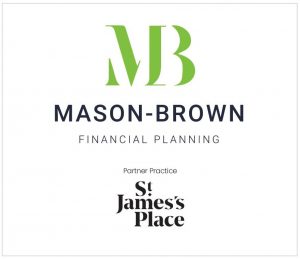Inheritance tax (IHT) planning is a crucial aspect of financial management, aiming to minimise the tax burden on assets passed down to heirs.

The inheritance tax (IHT) nil rate band for individuals who are not married or in a civil partnership is £325,000. For married couples or civil partners, the combined nil rate band is £650,000. Additionally, the residence nil rate band (RNRB) applies to the main residence passed on to direct descendants, such as children or grandchildren. The RNRB is currently £175,000 per person, effectively allowing a married couple or civil partners to potentially have a total nil rate band of up to £1 million when including the standard and residence allowances.
The Residence Nil Rate Band (RNRB) is subject to a tapered reduction for estates with a net value exceeding £2 million. For every £2 of the estate’s net value over £2 million, the RNRB is reduced by £1. This reduction applies to both single individuals and married couples or civil partners.
For instance, if an individual’s estate is valued at £2.2 million, there is a reduction in the RNRB because the estate exceeds the £2 million threshold by £200,000 (£2.2 million – £2 million). The reduction is £1 for every £2 over the threshold, so the reduction would be £100,000 (£200,000 / 2). Therefore, the available RNRB would be reduced by this amount.
It’s important to note that the net value of the estate includes not only the assets subject to inheritance tax but also any liabilities and certain gifts made within seven years of death.
Typically, any estate exceeding the established allowances and thresholds is liable to incur an inheritance tax rate of 40% on the amount exceeding.
As tax laws can change, it’s advisable to check for the most recent updates or consult with a professional for the latest information on the Residence Nil Rate Band and its potential reductions.
Holdover relief, business assets, and succession planning can be key components in navigating the complex landscape of inheritance taxation.
Holdover relief serves as a valuable tool in IHT planning, allowing individuals to defer or reduce the tax payable on gifts during their lifetime. By utilising holdover relief, one can transfer assets, such as property or investments, to family members without an immediate tax consequence. This strategy proves advantageous, especially when contemplating the long-term transfer of appreciating assets.
Business assets play a pivotal role in IHT planning, often qualifying for business property relief (BPR). BPR provides significant tax advantages on eligible business assets, reducing their taxable value or even exempting them entirely. This relief is particularly beneficial for family-owned businesses, as it fosters the continuity of the enterprise while minimising the impact of IHT.
Succession planning is essential for individuals seeking to pass down wealth efficiently. Establishing wills and trusts allows for a structured distribution of assets, taking advantage of available reliefs and exemptions. Gifting assets progressively over time, rather than in a lump sum, can also contribute to a more tax-efficient transfer of wealth.
Moreover, the use of trusts in inheritance tax planning provides flexibility and control over how assets are distributed. Discretionary trusts, for example, enable trustees to allocate assets among beneficiaries as circumstances evolve. This approach enhances tax efficiency by accommodating changes in family dynamics and financial landscapes.
It’s crucial to stay informed about the ever-evolving tax regulations and seek professional advice to ensure compliance and optimise inheritance tax planning. The effectiveness of these strategies depends on individual circumstances, making tailored advice essential for developing a comprehensive and personalised plan.
In conclusion, inheritance tax planning demands a strategic approach that incorporates holdover relief, leverages business assets, and embraces thoughtful succession planning. By navigating these avenues with careful consideration and professional guidance through a Chartered Financial Planner, individuals can safeguard their wealth for future generations while minimising the impact of inheritance taxation.

Free guide
To receive a complimentary guide covering wealth management, retirement planning or Inheritance Tax planning, contact Jack Mason-Brown on 07814 655179 or email jack.mason-brown@sjpp.co.uk.
Connect with Jack on social media
www.instagram.com
www.facebook.com
…




Leave A Reply